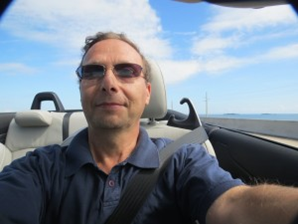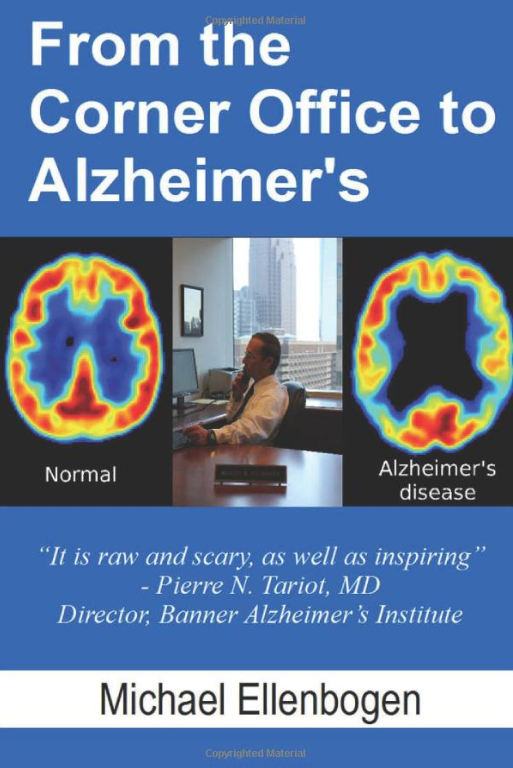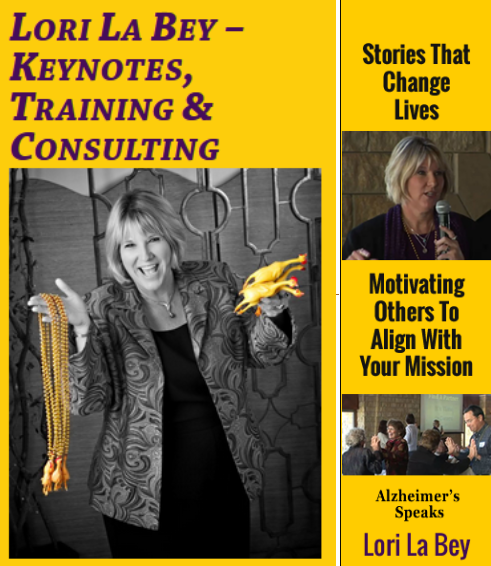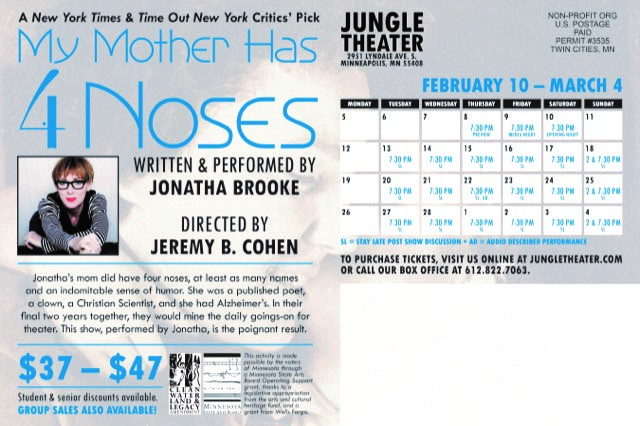Driving, Dementia and Today’s Technology
Driving, Dementia and Today’s Technology
By Michael Ellenbogen

In 2010 I was thinking of buying a new car but I did not want to invest the money as I was not sure how much longer I would be able to drive. I live with dementia, and I feared I would need to stop driving any day. This went on for years and I was still able to drive. So I finally made the decision to buy a new car in 2013.
That was the best thing I could have done as the new technology helped make up for some of my skillsets that had weakened over the years. It not only improved my driving capabilities, it made me a much safer driver.
At the end of 2017 I had been reading about all the amazing new safety technologies that exist in some new cars. Knowing that these technologies would help make me a safer driver, I decided not to wait for more years to pass, and I went and bought a new car.
While I know not everyone can afford to do this, for those that can I highly recommend you look into using technology to your benefit if you are living with some type of dementia. The one problem I did run into was reading the new manuals and being able to apply the changes to the options. This time around it was much harder for me to read the manuals. My wife helps me greatly in setting it all up to insure it is set up the way I want it. While I may not be able to set it up I sure know how to use it is once it its set.
While there may be some features I will never know how to use, it is important to not fear making the change. This is the best thing I could have done, and I already love the safety features and how they are making driving so much easier. This new car will allow me to drive much longer than I would have been capable of driving in my old car. I also had to limited my night time driving in the recent years as I had difficulty seeing the road at night. This new car changed that and I now feel very comfortable driving at night. I only wish the self-driving cars were available. I was also very surprised as I was able to still negotiate a great deal. I actually saved over $2,600 on the asking price. This disease is really amazing on how some skills are so impacted and yet others still work with some extra help.
Below are some of the safety features from Toyota. While the vehicle has these features, it is important to insure some of them are turned on in order to function the way they are intended to.
Anti-lock Brake System (ABS) – Helps prevent brakes from locking. The ABS monitors the speed of each wheel to detect locking. When it detects sudden braking, it will release braking pressure for a moment and then provide optimum braking pressure to each wheel. By repeating this process in a short period of time, it enhances steering control during sudden stops. As a result, it will also help improve the ability of stopping the vehicle.
Automatic High Beams (AHB) – is designed to help you see more clearly at night without blinding other drivers. Designed to activate at speeds above 25 mph, AHB rely on an in-vehicle camera to help detect the headlights of oncoming vehicles and taillights of preceding vehicles, then automatically toggle between high and low beams accordingly to provide the appropriate amount of light. By using high beams more frequently, the system may allow earlier detection of pedestrians and obstacles.
Bird’s Eye View Camera with Perimeter Scan – allows for drivers to check their surroundings with a full 360-degree view of their vehicle before pulling into a small parking spot or pulling up next to a curb. It provides a panoramic, seamless image in high definition that leaves no room for mistakes. With this system, drivers can rest assured knowing they’ll be able to detect any hazards before it’s too late. It uses cameras strategically mounted around the vehicle to give drivers.
Blind Spot Monitor (BSM) – indicator light up in the outside mirrors and hear a tone to confirm that the system has been engaged. When a vehicle in the next lane enters your blind spot on either side, the indicator will light up in that side view mirror. If you signal a lane change in that direction while the vehicle is still there, the indicator will flash to get your attention.
Brake Assist and Smart Stop Technology – This technology can sense when you hit the brakes in an emergency situation and apply even more force to help you stop faster and avoid a collision. The Smart Stop Technology automatically stops the vehicle when both the accelerator and the brake pedal is pressed at the same time, just in case you need to bring your new Toyota to a quick stop!
Dynamic Radar Cruise Control (DRCC) – is intended for highways and similar to “constant speed” cruise control, DRCC lets you drive at a preset speed. DRCC uses vehicle-to-vehicle distance control, which adjusts your speed, to help you maintain a preset distance from vehicles ahead of you that are driving at a slower speed. DRCC uses a front-grille-mounted radar and an in-vehicle camera to detect vehicles and their distance. If a driver is traveling slower than you, or within your preset range, DRCC will automatically slow your vehicle down without deactivating cruise control. If DRCC determines you need to slow down more, an audio and visual alert notifies you and brakes are applied. When there’s no longer a vehicle driving slower than your set speed in front of you, DRCC will then accelerate and regular cruise control will resume.
Electronic Brake-force Distribution (EBD) is incorporated in Toyota’s ABS technology. EBD helps keep a vehicle more stable and balanced when braking. During an abrupt stop, momentum can cause a vehicle to tilt forward, reducing the brake force of the rear tires. EBD responds by redistributing brake force. Wheels with more braking effectiveness receive more brake force and wheels with less effectiveness receive less brake force, helping to prevent brake lockup. EBD is especially helpful when carrying cargo. Sensors recognize the extra load the cargo puts on the rear axle, so brake pressure on the rear wheels is increased because the extra weight improves braking effectiveness.
Enhanced Vehicle Stability Control (VSC) – Helps prevent wheels from slipping sideways when cornering or sudden steering. VSC is a system that helps prevent side skids and help stabilize the vehicle while turning on a curve. When the vehicle senses a loss of traction or a slip, braking is automatically applied to all 4 individual wheels and engine power is reduced to help secure the safety of the vehicle. For example, if the steering wheel refuses to turn from over-speeding (under-steering), the vehicle will take control to steer toward the inner curve. Also, when the vehicle begins to spin from abrupt steering handling (over-steering), the vehicle will take control to steer toward the outer curve.
Front and Rear Parking Sonar – When your speed drops below 6 miles an hour, the sonar graphic will appear in the Multi-Information Display and you’ll hear beeping to warn you that the system senses another vehicle or obstacle very close to vehicle. If the transmission is in Drive, only the front sensors activate. When you shift into Reverse, both the front and rear sensors come online. The speed of the warning tone and color of the graphic will give you an idea of how close you are. A constant tone and red indicator means you are very close.
Lane Departure Alert (LDA) – Under certain circumstances, LDA is designed to detect lane departure on roads with clear markings. LDA only activates when you’re traveling at a speed of 32 mph or faster. When you hear and see the alert, after carefully checking the road around you, you should safely direct your vehicle back to the center of your lane.
Pre-Collision System (PCS) – Uses an integrated camera and laser or radar to help detect other vehicles in front of you. It can prompt you to take action using audio and visual alerts if it determines a frontal collision is likely. If you notice the potential collision and apply the brakes, PCS may apply additional force using Brake Assist (BA). If you don’t brake in time, PCS may automatically apply the brakes for you, helping to minimize the likelihood of a frontal collision or reduce its severity.
Pre-Collision System with Pedestrian Detection (PCS w/PD) – Using an in-vehicle camera and radar to help detect a vehicle or a pedestrian in front of you, the PCS w/PD can help you mitigate or avoid a potential collision. If the system determines that a frontal collision is likely, it prompts you to take action using audio and visual alerts. If you notice the potential collision and apply the brakes, PCS w/PD may apply additional force using Brake Assist (BA). If you don’t brake in time, it may automatically apply the brakes to reduce your speed, helping to minimize the likelihood of a frontal collision or reduce its severity.
Rear Cross Traffic Alert (RTCA) – helps when you’re backing out from a parking space, and the vehicle is in reverse and speed is less than 5 MPH. It detects vehicles approaching from the right or left rear traveling between 5 and 18 MPH. If the system senses cross traffic, it warns you by flashing the side near indicators and sounding a warning tone.
Traction Control (TRC) – Helps prevent wheel slippage when the vehicle is starting or accelerating on wet or slippery roads. When you are starting the vehicle, or accelerating on a wet surface, you could lose control of the wheel because of wheel spin. TRC will help prevent such events from happening. TRC continually monitors the condition between the tires and the surface of the road. When it detects wheel spin, the system applies brakes or slows down the engine to regulate spinning and help ensure proper contact of tires. This help prevents the car from becoming unstable. There might be the cases in which the half-side of the wheel runs off or the wheels spin off on the snowy road. And also there might be the case that the current traction control might not be working well. In those cases, Auto LSD is one of the technologies which both improve start ability and run ability.
Source: www.toyota.com

Looking for a Speaker?
See what LeadingAge has to say about Lori La Bey.
“Feedback from the conference planning committee and our leadership team was extremely positive.
Many attendees commented that she was one of the best speakers they had heard.”
Pat Sylvia, Director of Education & Member Development LeadingAge Washington

















